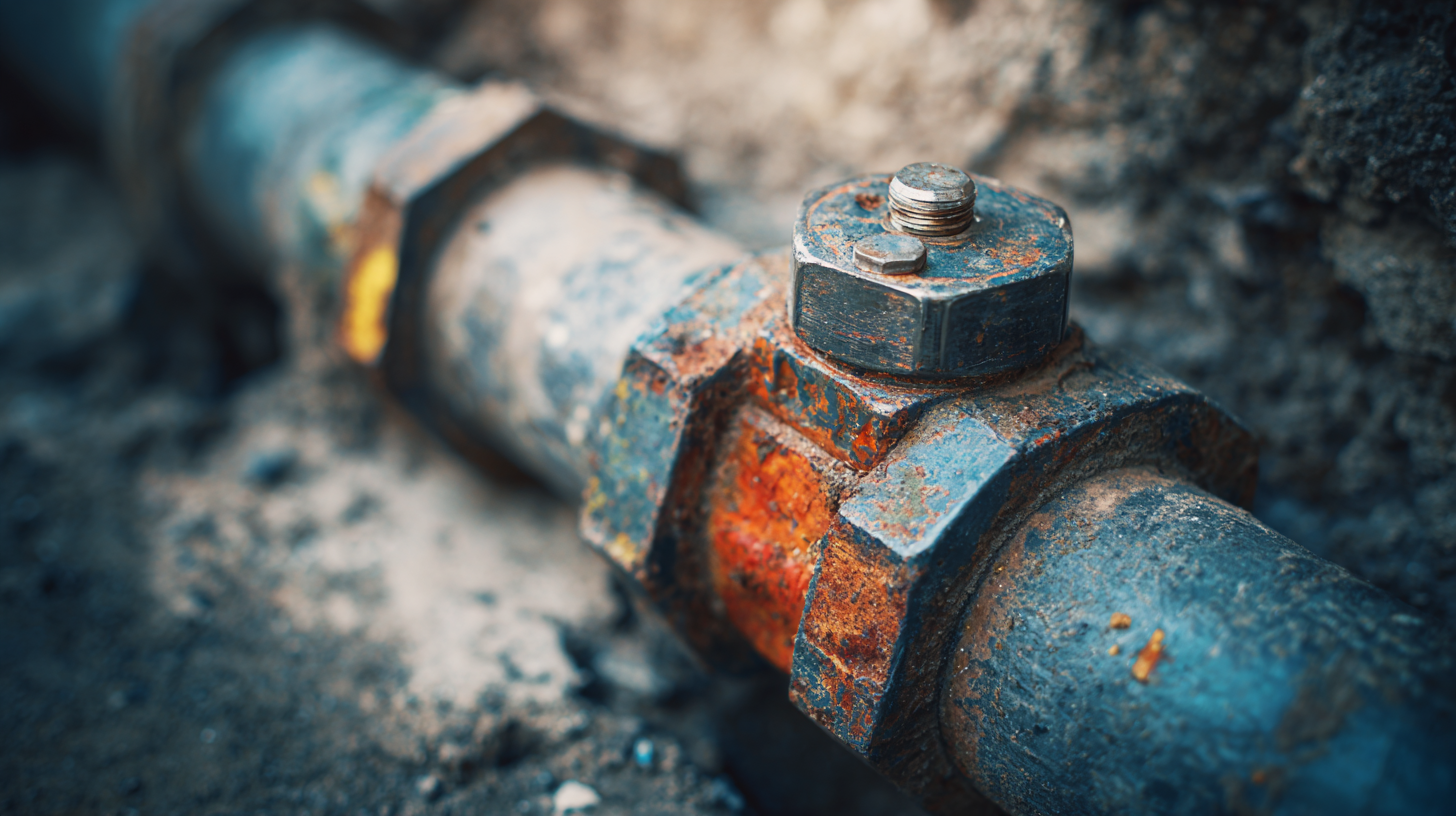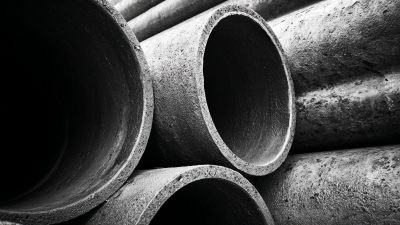Why No Dig Pipe Repair is the Future of Sustainable Plumbing Solutions
In recent years, the plumbing industry has evolved significantly, driven by the pressing need for sustainable and efficient solutions. Among these innovations, no dig pipe repair has emerged as a game changer, offering a minimally invasive method that not only reduces environmental impact but also lowers costs associated with traditional excavation methods. According to a report by the American Society of Civil Engineers, approximately 240,000 water main breaks occur annually in the United States, which can lead to substantial water loss and infrastructure damage. No dig pipe repair techniques, such as trenchless technology, have been shown to decrease repair time by up to 70% and reduce overall project disruption, making them a preferred choice for municipalities and homeowners alike. As we look towards the future of plumbing, incorporating no dig pipe repair methods will not only enhance system longevity but also contribute to a more sustainable approach in managing our vital water resources.

The Economic Benefits of No Dig Pipe Repair in Sustainable Plumbing
The growing emphasis on sustainability in plumbing solutions has led to the increased popularity of no dig pipe repair methods, which offer significant economic advantages. By minimizing the need for extensive excavation, these innovative techniques dramatically reduce labor and restoration costs. The North American trenchless pipe rehabilitation market is projected to grow from $1.97 billion in 2025 to $3.05 billion by 2032, illustrating the robust demand for such eco-friendly solutions.

Recent advancements in technology, such as robotic pipeline cutting and AI tools that detect leaks using sound, are further enhancing the efficiency of these repairs. Such tools not only limit environmental disruption but also help utilities conserve valuable resources like drinking water. Companies are increasingly adopting trenchless technologies, ensuring that plumbing issues are resolved swiftly and sustainably, ultimately leading to greater economic benefits for both service providers and consumers in the long run.
Understanding the Environmental Impact of Traditional Plumbing Methods
Traditional plumbing methods often come with significant environmental drawbacks, including the disruption of ecosystems and increased carbon emissions due to extensive excavation. This impact is magnified in areas where water management is crucial, as seen in various case studies highlighting the environmental consequences of household water use. In regions like Flanders, understanding the interaction between water sources, production methods, and consumption patterns has become vital for promoting sustainable practices.
Conversely, no dig pipe repair methods present a promising alternative by minimising disturbances to the environment. Techniques such as trenchless technology reduce the need for invasive excavation, preserving the integrity of the surrounding ecosystem. Recent reviews have emphasized innovations such as Cured-in-Place Pipe (CIPP) lining, which not only enhance the durability of plumbing systems but also align with sustainable development goals. By adopting these advanced methods, the plumbing industry can significantly mitigate its environmental footprint, paving the way for a more sustainable future.
Why No Dig Pipe Repair is the Future of Sustainable Plumbing Solutions - Understanding the Environmental Impact of Traditional Plumbing Methods
| Plumbing Method | Environmental Impact | Repair Time (Hours) | Digging Required | Cost (USD) |
|---|---|---|---|---|
| Traditional Excavation | High soil disruption, habitat destruction | 24-48 | Yes | 500-1500 |
| Pipe Bursting | Medium impact, minimal surface disruption | 12-24 | No | 200-1000 |
| No Dig (CIPP) | Lowest impact, preserves ecosystems | 4-8 | No | 100-800 |
| Trenchless Technology | Low disruption, maintains existing landscaping | 10-20 | No | 300-1200 |
Innovative Technologies Driving No Dig Pipe Repair Solutions
The advancement of innovative technologies plays a pivotal role in the evolution of
no dig pipe repair solutions. Traditional plumbing methods often involve extensive excavation, leading to disruption of landscapes and increased costs. In contrast, no dig technologies employ techniques such as
slip lining, pipe bursting, and cured-in-place piping (CIPP), allowing for pipe rehabilitation without invasive digging. These methods utilize cutting-edge materials and precision machinery, ensuring that damaged pipes can be efficiently repaired with minimal environmental impact.
Moreover, the integration of digital technologies enhances the effectiveness of no dig pipe repair. Tools such as remote video inspections and advanced leak detection sensors allow plumbing professionals to accurately assess the condition of underground pipes without excavation. This real-time data collection not only streamlines the repair process but also contributes to better planning and resource allocation. As sustainable plumbing solutions become increasingly important, the synergy of innovative technologies drives the future of no dig pipe repair, aligning economic viability with environmental responsibility.

Comparative Analysis: No Dig vs. Conventional Repair Methods
The comparative analysis of no-dig and conventional repair methods highlights significant advantages for trenchless technologies in the plumbing sector. No-dig techniques, particularly in the rehabilitation of sewer pipes, minimize surface disruption and reduce the need for extensive excavation. According to industry reports, the North America trenchless pipe rehabilitation market is poised for substantial growth, projected to rise from $4.91 billion in 2025 to $6.86 billion by 2032, with a compound annual growth rate (CAGR) of 4.89%. This growth reflects a shift towards solutions that align with sustainable practices and urban development needs.
In evaluating these methods, Cured-in-Place Pipe (CIPP) lining and Spray Applied Pipe Lining (SAPL) emerge as key players. Both technologies offer unique benefits, yet CIPP has been noted for its efficacy in maintaining the structural integrity of existing pipelines while also ensuring a longer lifespan. As municipalities face the challenges of aging infrastructure and the urgent need for improvement, the shift towards no-dig solutions not only addresses immediate repair needs but also promotes sustainability in water management systems. The urgency of upgrading systems, particularly gravity flow wastewater collection systems, emphasizes the role of trenchless technologies in mitigating the risk of catastrophic failures associated with conventional repair methods.
Comparative Analysis of No Dig Pipe Repair vs. Conventional Repair Methods
Case Studies: Successful No Dig Projects and Their Long-term Benefits
No dig pipe repair has emerged as a transformative solution in the plumbing industry, offering notable long-term benefits highlighted by various case studies. For instance, a recent analysis by the American Society of Civil Engineers noted that trenchless technology can reduce excavation costs by 30% while minimizing the environmental disruption associated with traditional pipe repair methods. These projects have not only proven effective in urban areas but have also shown significant improvements in pipeline longevity, with many lasting over 50 years.
Moreover, cities like Seattle have successfully implemented no dig repairs, resulting in a 40% reduction in service interruption times for residents. This method allows for swift restorations while protecting existing landscapes and infrastructure. Key environmental benefits also arise from reduced carbon emissions during repairs, making no dig solutions a sustainable choice for future plumbing projects.
Tips for homeowners considering no dig solutions include researching local contractors experienced in trenchless technology and consulting with professionals to evaluate the specific needs of your plumbing system. Additionally, staying informed about local regulations regarding underground repairs can streamline the process and ensure compliance. Embracing these modern techniques can lead to significant savings and a reduced environmental footprint.
Related Posts
-

Complete Guide to Efficient CIPP Pipe Repair Techniques for Modern Infrastructure
-

Unlocking the Advantages of No Dig Sewer Repair for Modern Infrastructure
-

How to Effectively Address Sewer Issues with No-Dig Solutions
-

7 Essential Tips for Effective Home Sewer Line Repair You Can't Ignore
-

Mastering Internal Pipe Repair Sleeve Techniques for Optimal Results
-

How to Identify Signs Your Sewer Line Needs Immediate Attention

